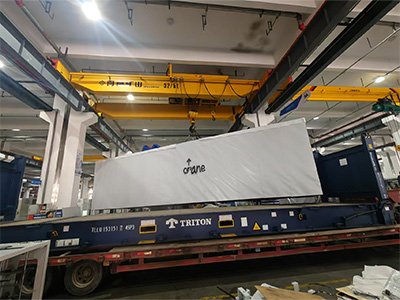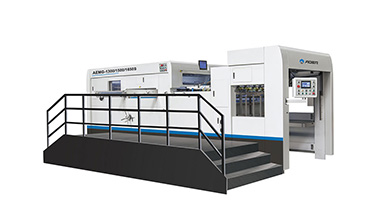In the competitive landscape of modern business, choosing the right die-cutter can be a critical decision that affects productivity, product quality, and overall profitability. Die-cutters are versatile tools that can be used in industries ranging from packaging and printing to electronics and textiles to cut materials into specific shapes. With so many options available on the market, making an informed choice requires a comprehensive understanding of several key factors. These include production requirements, equipment type, quality reliability, cost-effectiveness, and after-sales service.

1. Production Requirements
- Volume
- If your business has high - volume production needs, you should consider high - speed die - cutting machines that can handle a large number of sheets per hour. For example, some automatic flat - bed die - cutting machines can process over 8,000 sheets per hour, which is suitable for large - scale printing and packaging enterprises.
- For small - volume production, a semi - automatic or manual die - cutting machine may be sufficient. These machines are more cost - effective and suitable for small - scale printing shops or businesses with low - volume orders.
- Complexity of Shapes
- If you need to cut complex shapes and patterns, look for a die - cutting machine with high precision and flexibility. Computer - controlled die - cutting machines can achieve very high cutting accuracy, usually within ±0.1mm, and can handle various complex graphic files.
- For simple shapes such as rectangles and circles, a basic die - cutting machine can meet the requirements. However, if you plan to expand your product range in the future, it is advisable to choose a machine with certain flexibility to avoid the need for frequent equipment upgrades.
2. Machine Type
- Flat-Bed Die Cutting Machine
- It is suitable for cutting various materials such as paper, cardboard, and thin plastics. It offers high precision and is suitable for processing small - and medium - sized products with complex shapes. Flat-bed die cutting machines are widely used in the printing, packaging, and label industries.

AEMG-1300S/1500S/1650S(Q) Automatic Flat-Bed Die Cutting Machine
- Rotary Die Cutting Machine
- This type of machine is characterized by high - speed and continuous processing, making it suitable for large - volume production of simple - shaped products, such as rolls of labels and packaging tapes. Rotary die - cutting machines are often used in the food, beverage, and pharmaceutical packaging industries.
- Die - Cutting Plotter
- It combines the functions of cutting and plotting, suitable for processing small - batch, high - precision products, such as electronic components, stickers, and handicrafts. Die - cutting plotters are widely used in the electronics, advertising, and handicrafts industries.
3. Quality and Reliability
- Brand and Reputation
- Choose well - known brands with a good reputation in the market. Brands with a long history and rich experience usually have more mature technology and better after - sales service, which can provide reliable technical support and spare parts supply.
- Components and Materials
- Examine the quality of the machine's components and materials. High - quality components, such as the cutting blade, transmission system, and control system, can ensure the stability and durability of the machine. For example, using imported high - quality blades can extend the service life of the cutting tool and improve cutting quality.
- Quality Certification
- Check if the machine has relevant quality certifications, such as CE certification. Certified machines comply with international quality and safety standards, indicating that the machine has passed strict testing and meets certain quality requirements.
4. Cost - effectiveness
- Initial Investment
- Consider the purchase price of the die - cutting machine. Different types and models of machines have different prices. Generally, high - speed, high - precision automatic die - cutting machines are more expensive, while manual and semi - automatic machines are relatively cheaper. Choose a machine that fits your budget while meeting your production requirements.
- Operating Costs
- Calculate the operating costs, including power consumption, maintenance costs, and the cost of consumables such as blades and dies. Energy - efficient machines can save on electricity costs, and machines with low maintenance requirements can reduce maintenance costs. In addition, the cost of consumables also varies from machine to machine, so choose a machine with relatively inexpensive consumables.
- Return on Investment
- Consider the potential return on investment. A high - efficiency, high - quality die - cutting machine can improve production efficiency, reduce waste, and improve product quality, thereby increasing your business profits. Calculate the payback period of the machine based on your expected production volume and profit margin to evaluate its cost - effectiveness.
5. After - sales Service
- Technical Support
- Ensure that the supplier can provide timely and effective technical support. This includes on - site installation, commissioning, operator training, and troubleshooting services. Professional technical support can help you quickly solve problems during machine operation and ensure the normal operation of the production line.
- Spare Parts Supply
- Check the availability of spare parts. The supplier should have a sufficient inventory of spare parts to ensure that you can quickly obtain the required parts when the machine breaks down, minimizing downtime.
- Warranty and Service Contracts
- Understand the warranty terms and service contracts provided by the supplier. A long - term warranty and a comprehensive service contract can provide you with peace of mind and protect your investment. Some suppliers also offer extended warranty services and maintenance packages to meet different customer needs.
In conclusion, choosing the right die cutting machine for your business is a multi - faceted decision. By carefully assessing your production requirements, understanding the different machine types, evaluating quality and reliability, considering cost - effectiveness, and ensuring good after - sales service, you can select a machine that will not only meet your current needs but also support the growth and success of your business in the long term.
